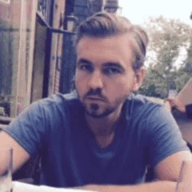Rare diseases are not all that rare—it’s a paradox we hear all the time. With more than 7,000 known examples, and upwards of 25 million Americans affected, rare diseases are actually common. We need to be our most vocal advocates. Looking forward to this year’s Rare Disease Week on Capitol Hill, we wanted to understand the importance of our relationship with legislators so that we can continue to achieve progress.
To do so, we’re looking back on one of the most important pieces of legislation to impact the rare disease community: the 1983 Orphan Drug Act. The definition of a rare disease is not very old. Congress created the parameters around what it means to be a “rare disease” as part of this landmark legislation:
“The term ‘rare disease or condition’ means any disease or condition which occurs so infrequently in the United States that there is no reasonable expectation that the cost of developing and making available in the United States a drug for such disease or condition will be recovered from sales in the United States of such drug.”
This ambivalent definition would be clarified a year later to say any condition that affects fewer than 200,000 people constitutes a rare disease.
It was a giant leap for the rare disease community, because it provided pharmaceutical companies with three important incentives: Federal funding of grants and contracts to perform clinical trials of orphan products, a tax credit of 50 percent of clinical testing costs, and an exclusive right to market the orphan drug for 7 years from the date of marketing approval.
Since 1983, the program has successfully launched over 600 drugs and biological products for rare diseases. To highlight just how impactful this legislation has been, between 1973 and 1983, fewer than 10 treatments for rare disease were approved.
Three main groups were active in spearheading the law: government, pharma, and patient advocates. But the patient advocates were the most important, because if citizens were not reaching out to their representatives and creating grass-roots organizations, politicians wouldn’t know that change was so critical. Without politicians creating new incentives, drug development would not have been feasible for pharmaceutical companies. It all started with a few voices, and it turned into a movement.
Advocates got celebrity endorsements, they interacted with the media, they took out full-page newspaper ads, and they testified in front of congress. Having sparked a revolution in the development of rare disease treatment, they decided to formalize their ad hoc patient coalition, and this led to the creation of National Organization for Rare Disorders (NORD).
As Rare Disease Week on Capitol Hill draws closer, it is important to look back on all that has been accomplished by rare disease communities. Patient advocacy can make a real difference, and when we take proactive steps on behalf of our own communities, we foster progress. When we unite around a common good, we can change the world.

